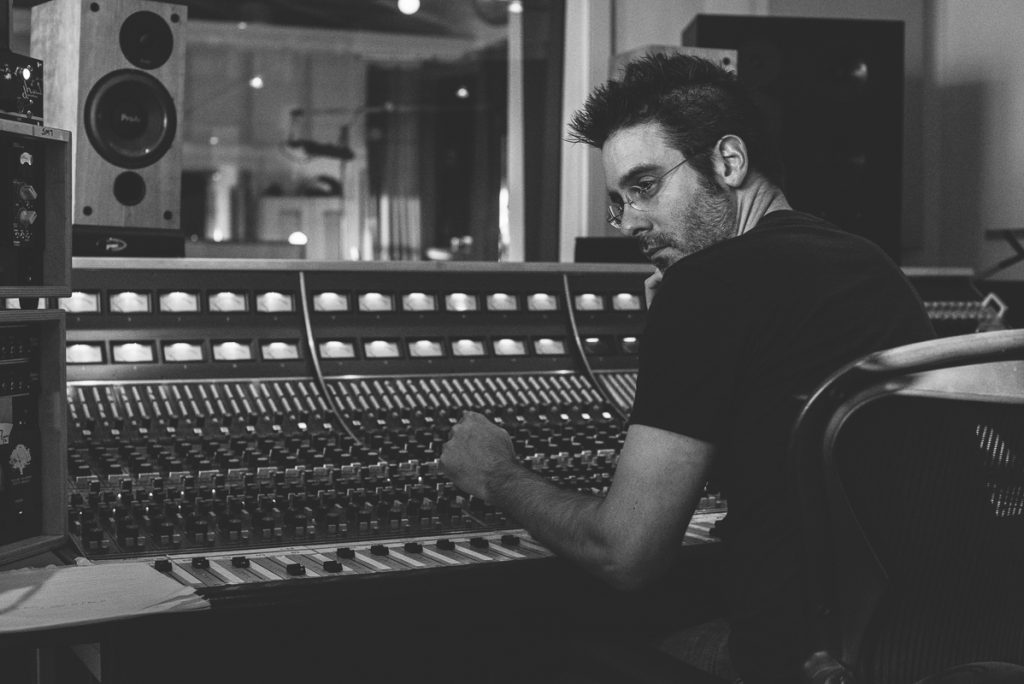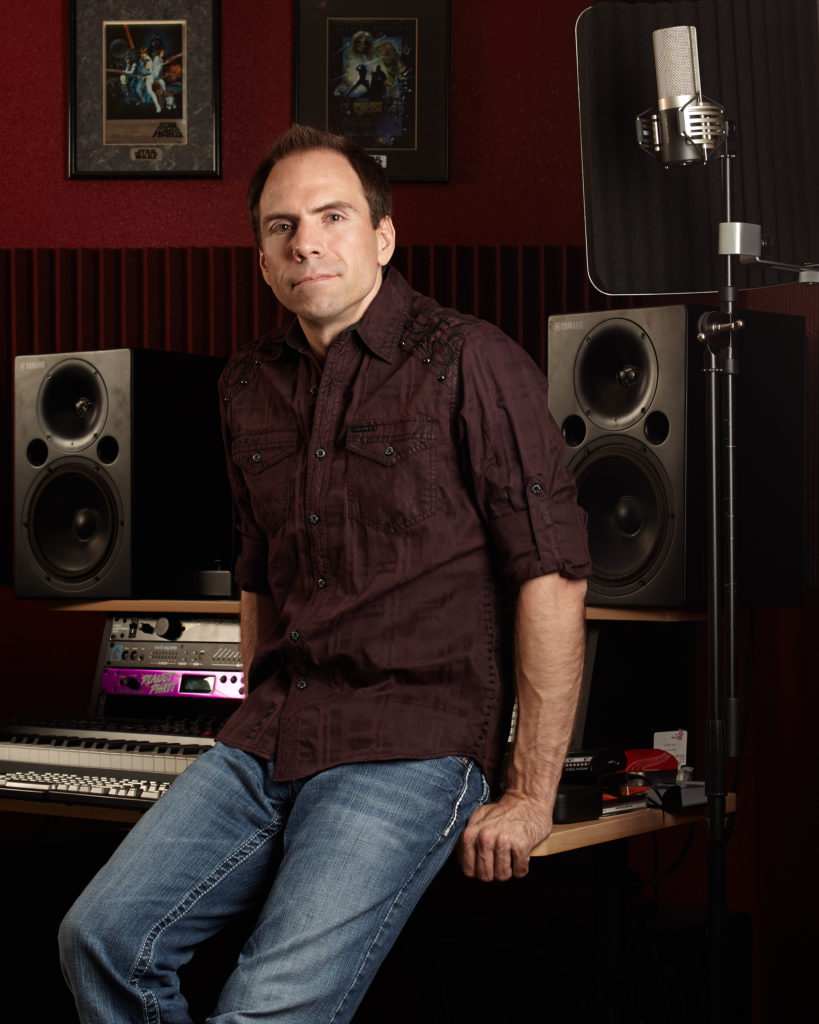Since the inception of our blog, one of the most popular features has been our guest blog series from pro audio experts. Examining everything from recording live music to the process behind the final mix, these blogs provide valuable insight for pros and audio students alike. Read on as we’ve compiled some of the most popular guest blog entries from our archives.
Frank Klepacki Blog Series: Music Technology Evolution in Video Games
 In this very first installment of his ongoing guest blog series, Frank Klepacki takes an in-depth look at the history of music in video games. From the earliest days of gaming to modern day compositions, Frank shares his first hand knowledge of the industry.
“Traditional composers may have dismissed the idea of game music, thinking you couldn’t do all that much with it, or that it wasn’t serious. But as composers who ARE gamers, we understood that it, in fact, forced you to think harder about how you were going to utilize the technology in front of you, and make the most of it. Think about it in terms of having a snare drum, a bass, a flute, and a clarinet – and then being told to compose utilizing only those 4 players/instruments for an entire soundtrack. We accepted the challenge.”
Read the full blog here.
In this very first installment of his ongoing guest blog series, Frank Klepacki takes an in-depth look at the history of music in video games. From the earliest days of gaming to modern day compositions, Frank shares his first hand knowledge of the industry.
“Traditional composers may have dismissed the idea of game music, thinking you couldn’t do all that much with it, or that it wasn’t serious. But as composers who ARE gamers, we understood that it, in fact, forced you to think harder about how you were going to utilize the technology in front of you, and make the most of it. Think about it in terms of having a snare drum, a bass, a flute, and a clarinet – and then being told to compose utilizing only those 4 players/instruments for an entire soundtrack. We accepted the challenge.”
Read the full blog here.
Ryan Hewitt: Always In Record, Part 1
[caption id="attachment_836" align="aligncenter" width="640"] (Photo: Victoria Perova)[/caption]
In his guest blogger series, engineer, mixer and producer Ryan Hewitt covers various aspects of the recording experience. To kick off the series, Ryan reflects on advice given to him by legendary engineer Phil Ramone and explains the story behind the title – “Always in Record.”
“Always in record,” Phil Ramone once commanded me. In the days of tape, that was an expensive proposition, but now, with storage being so cheap and plentiful, there is no excuse to not be recording whenever the artist is in the room.”
Read the full blog here.
(Photo: Victoria Perova)[/caption]
In his guest blogger series, engineer, mixer and producer Ryan Hewitt covers various aspects of the recording experience. To kick off the series, Ryan reflects on advice given to him by legendary engineer Phil Ramone and explains the story behind the title – “Always in Record.”
“Always in record,” Phil Ramone once commanded me. In the days of tape, that was an expensive proposition, but now, with storage being so cheap and plentiful, there is no excuse to not be recording whenever the artist is in the room.”
Read the full blog here.
Steve Lagudi Blog Series: Miking Toms
 As a veteran live sound and studio/recording engineer, Steve Lagudi brings a wealth of knowledge and experience to the A-T blog. His most popular blog entry delves into his preferences for miking the toms on a drum set. Steve goes beyond mic placement and shares his tips for EQ settings as well.
“As for my mic choice on the toms, I use condenser mics. For rack toms I love the ATM350’s. They are simple and easy to clip right on and can be placed exactly where you want them. Plus, with many drummers having the toms in close proximity to the overheads, it’s great to be able to get a nice low profile mic in place. For the floor toms I also use condenser mics, the AE3000’s. These mics have a bigger element in the mic and can really get a nice large sound from the drums while capturing the nice detail of the stick attack.”
Read the full blog here.
As a veteran live sound and studio/recording engineer, Steve Lagudi brings a wealth of knowledge and experience to the A-T blog. His most popular blog entry delves into his preferences for miking the toms on a drum set. Steve goes beyond mic placement and shares his tips for EQ settings as well.
“As for my mic choice on the toms, I use condenser mics. For rack toms I love the ATM350’s. They are simple and easy to clip right on and can be placed exactly where you want them. Plus, with many drummers having the toms in close proximity to the overheads, it’s great to be able to get a nice low profile mic in place. For the floor toms I also use condenser mics, the AE3000’s. These mics have a bigger element in the mic and can really get a nice large sound from the drums while capturing the nice detail of the stick attack.”
Read the full blog here.
Ryan Hewitt: Always in Record, Part 7
[caption id="attachment_3405" align="aligncenter" width="640"] (Photo: Andrew Kelly)[/caption]
Ryan takes readers behind the scenes of his meditative process in this seventh installment of the Always in Record series. He shares the process he uses to get into the proper mindset before he gets to work on a new mix.
“My second mix meditation involves my morning warm-up. I love to sit down and just listen to some music before I get to work, mainly because I haven’t had much of a commute for the past few years to listen to anything in the car and get my ears awake and alert. It helps me get in the mood to mix and brings new inspiration to the process. I listen to three songs: an old one that I love but never examined in a studio, one I’ve never heard before, and one that I’ve mixed in the past.”
Read the full blog here.
(Photo: Andrew Kelly)[/caption]
Ryan takes readers behind the scenes of his meditative process in this seventh installment of the Always in Record series. He shares the process he uses to get into the proper mindset before he gets to work on a new mix.
“My second mix meditation involves my morning warm-up. I love to sit down and just listen to some music before I get to work, mainly because I haven’t had much of a commute for the past few years to listen to anything in the car and get my ears awake and alert. It helps me get in the mood to mix and brings new inspiration to the process. I listen to three songs: an old one that I love but never examined in a studio, one I’ve never heard before, and one that I’ve mixed in the past.”
Read the full blog here.
Frank Klepacki Blog Series: What It Means To Be a Producer, Part 1
 In this enlightening blog post, Frank examines what it truly means to be a record producer. Sharing insights from his own process, Frank guides readers through the world of a record producer.
“As a producer, it absolutely helps to have an understanding of each instrument – not only how they sound, but how they are played. On a basic process of elimination, listen to how the instrument sounds right in front of you first. Make adjustments as needed either from the instrument setting, or the amp setting. Retune drums or swap heads if you’re not getting the sound you want. If that fails, borrow or rent another drum kit. Once all that is established and you and the artist like the sounds in front of you, then proceed to miking it, and find the best mic to reproduce that sound. This of course also gets into the engineering side of things, which is also an invaluable part of producing. If you know what kind of sound you want in your mind, then you should also know how to direct someone to properly achieve it, if you’re not the one behind the mixing board.”
Read the full blog here.
We hope to continue sharing the wisdom of pro audio’s best and brightest for years to come. To explore our extensive archive of guest blogs, click here.
In this enlightening blog post, Frank examines what it truly means to be a record producer. Sharing insights from his own process, Frank guides readers through the world of a record producer.
“As a producer, it absolutely helps to have an understanding of each instrument – not only how they sound, but how they are played. On a basic process of elimination, listen to how the instrument sounds right in front of you first. Make adjustments as needed either from the instrument setting, or the amp setting. Retune drums or swap heads if you’re not getting the sound you want. If that fails, borrow or rent another drum kit. Once all that is established and you and the artist like the sounds in front of you, then proceed to miking it, and find the best mic to reproduce that sound. This of course also gets into the engineering side of things, which is also an invaluable part of producing. If you know what kind of sound you want in your mind, then you should also know how to direct someone to properly achieve it, if you’re not the one behind the mixing board.”
Read the full blog here.
We hope to continue sharing the wisdom of pro audio’s best and brightest for years to come. To explore our extensive archive of guest blogs, click here.